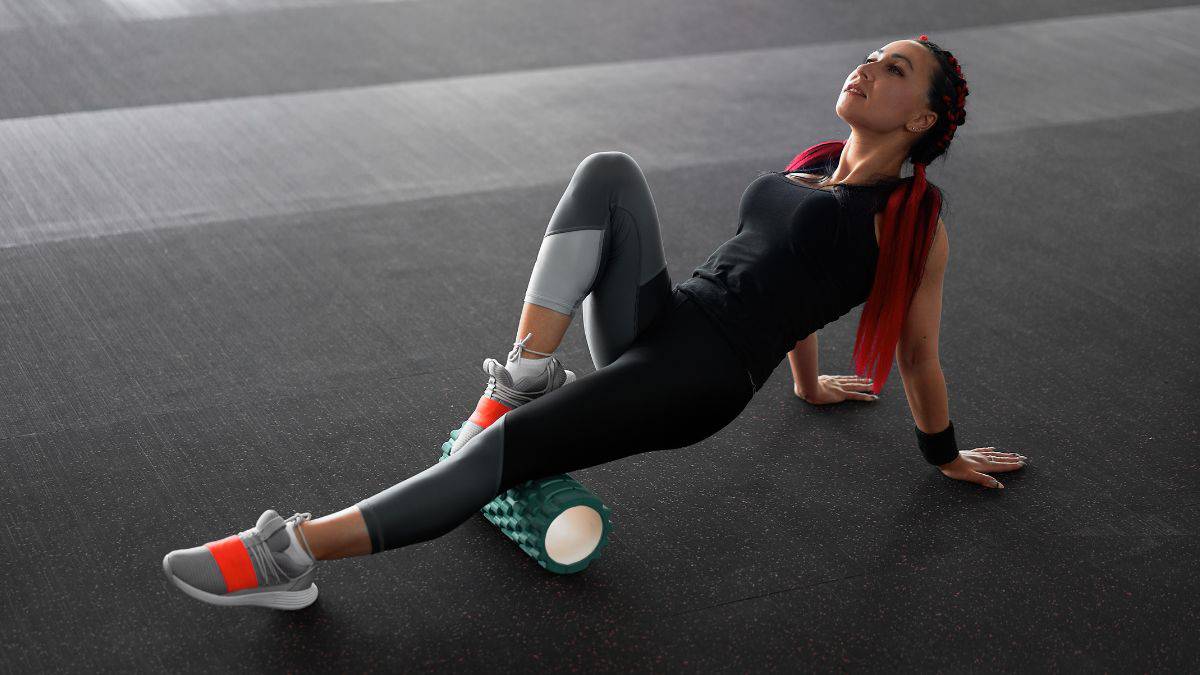Foam Rolling After Running: 5 effective exercises

Foam rolling, often referred to as self-myofascial release, is a popular technique used to enhance muscle recovery and flexibility. It involves using a cylindrical foam roller to apply gentle pressure to various muscle groups, promoting the release of tension and knots within the fascia – the connective tissue surrounding muscles.
Foam rolling after running can be particularly beneficial, as it aids in preventing muscle tightness and discomfort that often follows a rigorous run. By incorporating foam rolling into your post-run routine, you can help improve blood circulation, reduce muscle soreness, and maintain optimal muscle function for your next workout. If you don’t already have a foam roller, then check out the best rollers from Amazon.
Why Foam Roll After Running?
Foam rolling after running is a crucial practice that can significantly impact your post-workout recovery and overall running performance. When you run, your muscles undergo repetitive contractions and micro-tears, leading to muscle tightness and potential discomfort. Foam rolling serves as an effective tool to address these issues. Besides this, you should also keep these practices that hinder muscle growth.
By foam rolling after running, you’re aiding the process of breaking down knots and adhesions within the fascia, which can limit your muscle’s range of motion. This, in turn, enhances muscle flexibility and reduces the likelihood of injuries. Furthermore, foam rolling promotes blood circulation, which facilitates the delivery of oxygen and nutrients to fatigued muscles, expediting the recovery process. Incorporating foam rolling into your post-run routine can lead to more comfortable, efficient runs and contribute to the longevity of your running journey.
5 Foam Rolling Exercises for Runners
Foam rolling is an invaluable tool for runners seeking to optimize their performance and recovery. Here are five foam rolling exercises tailored specifically to runners, targeting key muscle groups prone to tightness and discomfort:
- Quads and IT Bands (Iliotibial Bands): Start by lying on your side with the foam roller beneath your quads. Roll along the length of your thigh, from just above the knee to your hip. Focus on any tight spots. For the IT bands, position yourself on your side with the foam roller placed under your hip. Roll from the hip to just above the knee, pausing on areas that feel tense.
- Hamstrings: Sit on the foam roller with your legs extended in front of you. Roll back and forth along your hamstrings from just below the glutes to the knees. Adjust the pressure by supporting yourself with your hands behind you.
- Calves: Sit on the floor with your legs extended. Place the foam roller under your calves and lift your hips off the ground. Roll from the knees to the ankles, focusing on any knots or tight spots. You can also try using a spiked foam roller vs a regular for this exercise.
- Glutes: Sit on the foam roller and cross one ankle over the opposite knee. Tilt your body to the side with the crossed leg and roll over your glutes. You can also roll back and forth while leaning slightly to one side to target specific areas.
- Hip Flexors: Position yourself in a plank position with the foam roller under your hips. Roll back and forth to target the hip flexor muscles. Cross one leg over the other to increase pressure and focus on one side at a time.
You should also check out these excellent body workouts for women.
Conclusion
Remember, the key to effective foam rolling is to go slowly and pause on areas that feel tight or tender. Breathe deeply as you roll and maintain a moderate level of pressure – it should be uncomfortable, but not painful. Aim to spend about 1-2 minutes on each muscle group. Incorporating these foam rolling exercises into your routine can enhance muscle flexibility, alleviate tightness, and ultimately contribute to a more comfortable and enjoyable running experience. Make foam rolling a consistent part of your post-run ritual to reap the full benefits it has to offer.




